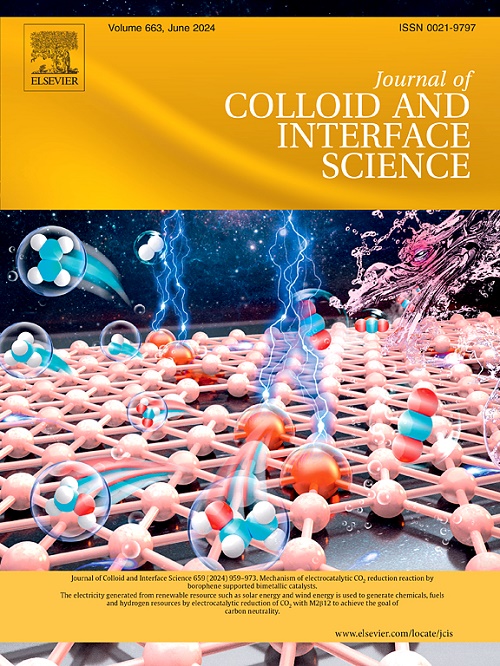Enabling enhanced energy efficiency for decoupled water splitting by a hierarchical hybrid redox mediator with exceptional supercapacitive performance
IF 9.4
1区 化学
Q1 CHEMISTRY, PHYSICAL
引用次数: 0
Abstract
The surplus renewable energy can be converted into H2 fuel through decoupled water splitting without the formation of explosive H2/O2 mixtures. The supercapacitor electrode materials effectively function as solid redox mediators in decoupled water splitting; however, their limited supercapacitive performance impedes the efficiency and durability. To address this issue, we have developed a hierarchical Ni/Co hydroxides/chalcogenides hybrid as the electrode material with a high specific capacitance of 1527.60 F g−1 at 2 A g−1 and stability over 10,000 cycles at 10 A g−1. When used as a redox mediator in decoupled water splitting, the NiFe LDH-NiFe alloy hybrid bifunctional electrode achieves low onset voltages of 1.458 V for H2 evolution and 0.162 V for O2 evolution at 100 mA cm−2, with an energy efficiency exceeding 95% over an extended duration of 104.19 h encompassing 640 decoupled cycles. This study highlights the crucial role of depolarization effect from battery-type supercapacitor electrode materials in achieving enhanced energy efficiency for decoupled water splitting.

求助全文
约1分钟内获得全文
求助全文
来源期刊
CiteScore
16.10
自引率
7.10%
发文量
2568
审稿时长
2 months
期刊介绍:
The Journal of Colloid and Interface Science publishes original research findings on the fundamental principles of colloid and interface science, as well as innovative applications in various fields. The criteria for publication include impact, quality, novelty, and originality.
Emphasis:
The journal emphasizes fundamental scientific innovation within the following categories:
A.Colloidal Materials and Nanomaterials
B.Soft Colloidal and Self-Assembly Systems
C.Adsorption, Catalysis, and Electrochemistry
D.Interfacial Processes, Capillarity, and Wetting
E.Biomaterials and Nanomedicine
F.Energy Conversion and Storage, and Environmental Technologies

 求助内容:
求助内容: 应助结果提醒方式:
应助结果提醒方式:


